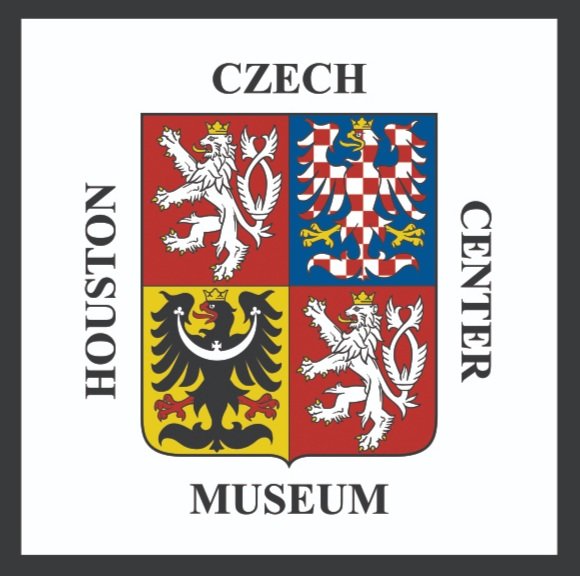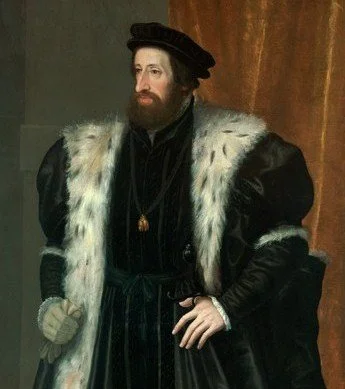The future of travel in Prague integrates environmental consciousness, quietness, efficiency, and quality, all through the Ring Road, intended to be complete in two years. As work on the road progresses, new discoveries are made, such as axes, hammers, and corkscrews from the Neolithic era and kitchen ceramics, iron and bronze tools, and glass beads from the Hallstatt era, for example. Their discoveries come from one of the greatest archeological efforts seen in the Czech Republic. Even now, and perhaps in the far future, old life is uncovered in preparation for the Ring RoadŌĆÖs finished construction.
Ferdinand I's Embattled ascension to Holy Roman Emperor
After the death of Louie II, the Kingdom of Bohemia needed a new king, of which Ferdinand I took up the mantle. As the King of Bohemia, he inherited many issues surrounding the kingdom, including the encroaching Ottoman Empire, the political tug of war between the Bohemian diet members, and the religious strife between Protestants and Catholics. During his time, Ferdinand I delicately wielded his influence and power as the King of Bohemia, eventually becoming the Holy Roman Emperor.
Rock ŌĆśnŌĆÖ Roll in Communist Czechoslovakia
Rock ŌĆśnŌĆÖ roll was a major vehicle for great change in Czechoslovakia. At first, it was restricted by the state to only be Czech covers of famous Western singers and bands, done by Czech stars such as Karel Gott and Ji┼Ö├Ł Korn, and the public could not buy, sell, or distribute any Western music album. Bands like The Plastic People of the Universe and Katapult, and song artists, opposed the Communist regime by breaking their rules and directly speaking out against them, respectively. The trouble they caused for their government soon turned into action and protests.
Remains of the ▒╩┼Ö▒│Š▓Ō▓§▒¶Š▒╗Õ dynasty uncovered in Olomouc
The ▒╩┼Ö▒│Š▓Ō▓§▒¶Š▒╗Õ dynasty was a powerful and influential royal family in Bohemia that ruled between the late 9th and early 14th century. The remains of several members, however, are of those who lived and died between the 11th and early 13th century. After the discovery of the familyŌĆÖs bodies in the storeroom of St. Stephen in 2018, researchers used DNA and radiocarbon dating to determine that those buried are indeed the members of the ▒╩┼Ö▒│Š▓Ō▓§▒¶Š▒╗Õ family.
The Diary of V─ørka ░Ł┤Ū│¾▓į┤Ū▒╣├Ī
V─ørka ░Ł┤Ū│¾▓į┤Ū▒╣├Ī was a young Czech girl who sadly lived the last of her life in fear. During this time, she kept a diary she wrote into, giving future readers into a glimpse into the life of Czechoslovakians under Nazism, similar to how Anne Frank kept and wrote in her diary. One of her most poignant thoughts were about whether Jews like her would ever see their stuff or return to their old lives again. It was in 2006 that her diary was published.
An AI-Powered Partner: Aircraft Innovation In the Czech Republic
The Czech Republic has a long and successful relationship with the concept of aircraft, the nationŌĆÖs people honing their knowledge and understand since the late 1920s. Now, software that utilizes machine learning reads aircraft pilots faces to determine their condition for increased safety. Research for this technology is done in Brno based on the DARWIN initiative, funded by Honeywell.
Gabriela ┤│├Ł▒¶░ņ┤Ū▒╣├Ī: Czech Race Car Driver
Ą■▒╗Õ┼ÖŠ▒│”│¾ Smetana and the Prague Spring International Music Festival
The Prague Spring International Music Festival (not related to the 1968 Prague Spring) is a festival established by the Czech Philharmonic Rafael ░Ł│▄▓·▒▒¶├Ź░ņ to commemorate the death of Czech composer Ą■▒╗Õ┼ÖŠ▒│”│¾ Smetana. Every opening night for the last 80 years, SmetanaŌĆÖs national masterpiece M├Ī Vlast is played by a different orchestra. SmetanaŌĆÖs music life began in his youth, developed further by collaboration with one of his inspirations, Liszt. This 2025, Semyon Bychkov will conduct the next opening.
A (Nationalist) Puppet on a String
Puppeteering in Bohemia preserved the Czech culture and language, preventing both from being wiped out by Hapsburgs who pushed for the Germanization of the Czech lands. PuppetryŌĆÖs been practiced in Bohemia for centuries, beginning in the 16th century, used for religious and folk ceremonies. Not only has Czech puppeteering protected Czech identity in during the Hapsburg era, but also into the occupation of Czechoslovakia by the Nazis.
Liberation of ▒╩▒¶│·▒┼ł, ─īesk├® Bud─øjovice, and Karlovy Vary
Between May 7 and 8 in 1945, the Nazis surrendered to the Allied forces in ▒╩▒¶│·▒┼ł, ─īesk├® Bud─øjovice, and Karlovy Vary. It took weeks of fighting and many casualties to effectively force a surrender from the German High Command. It was through the collaboration of the Soviet and US forces that the liberation was able to take place. Much celebration, the day of and after, was abound.
Czech Dolls Mini-Exhibit
An important staple of Czech and Slovak culture, kroj-wearing dolls are popular toys and figures that many generations have played with and cherished. These dolls are made with a variety of quirks and features, such as closing their eyes while in a lying position or having rosier cheeks. One company, Lidova Tvorba Uhersky Brod, heavily promoted their dolls all over Slovakia, Europe, and the world, winning accolades for their efforts and remaining one of the best-known doll makers in Slovakia. These historical dolls are on display in the ┬ķČ╣Š½ŲĘ.
Eurovision 2025
Although Eurovision started as an experiment in broadcasting, it is now a show-stopping competition that unites Europe. The Central European nations of Czechia and Slovakia have a relatively short, yet important history with Eurovision. While CzechiaŌĆÖs the only of the two still competing, this 2025, their next entry is a Slovak named Adonxs, an accomplished artist of many skills.
Intervision
Intervision began as the Eastern bloc alternative to Eurovision, initiated by CzechoslovakiaŌĆÖs national television broadcaster. Though the initial contest lasted four years, it was abruptly ended by ŌĆ£NormalizationŌĆØ in Czechoslovakia. The Intervision concept gets picked up by PolandŌĆÖs broadcaster for their Sopot International Festival, where it lasts four more years before being interrupted by political upheaval, yet again. Though the future of Intervision is uncertain, its past is worth a look for the intersection between art and politics.
The Plastic People of the Universe: How One Band Sparked a Revolution
The fall of Communism in Czechoslovakia begins with a rock that rolls, pushed by the rock nŌĆÖ roll group the Plastic People of the Universe (PPU). After the brief Prague Spring, the group was started by the bassist, Milan ŌĆ£MejlaŌĆØ Hlavsa. During the Normalization period, they continued to find various ways of resisting the new administration before being jailed, which inspired further resistance and eventually lead Czechoslovakia out of the hands of the Soviet regime.
Anny Ondra: Starlet of the Silver Screen
The Czech Bedtime Routine: │š▒─Ź▒░∙▓įŠ▒─Ź▒░ņ
│š▒─Ź▒░∙▓įŠ▒─Ź▒░ņ is a late-night childrenŌĆÖs program broadcasted in Czechoslovakia, the Czech Republic, and Slovakia. With generations of children, it has immense cultural and nostalgic value. This program has made stars out of many of the cartoons, including the famous mole, Krtek. Due to the timeslot it would broadcast on, │š▒─Ź▒░∙▓įŠ▒─Ź▒░ņ became a staple of the bedtime routine.
History of Czech Poetry Works
The history of Czech poetry goes as far back as the 9th century. It begins with the works of Saints Cyril and Methodius, who translated texts in the bible from Greek to Old Church Slavic, a language in which the first Czech poems were written. Since then, Czech poetry continued to flourish, even when the chosen languages of the Czechs continued to face challenges throughout the centuries. The apparent culmination of Czech poetic culture is of a poem, ▓č├Ī┬ß, written by Karel Hynek ▓č├Ī│”│¾▓╣.
Irena Ą■▒░∙▓į├Ī┼Ī░ņ┤Ū▒╣├Ī and the Fight for Czechoslovak Independence
Irena Ą■▒░∙▓į├Ī┼Ī░ņ┤Ū▒╣├Ī, the second of Vojt─øch PreissigŌĆÖs three daughters, started her life in Boston, after being born in Prague, before returning to what was now Czechoslovakia. It was at this moment that she dedicated her life to writing and publication, particularly to resist the Nazi occupation. Although her relationship with her father initially splintered, it eventually mended as the two published a resistance magazine, V boj.
Ji┼Ö├Ł Trnka: The Father of Czech Cinema
The so-called ŌĆ£Walt Disney of Eastern Europe,ŌĆØ Ji┼Ö├Ł Trnka began his career as an illustrator, his life soon culminating into sophisticated puppetry on film. His usual subject matter involved his puppeted takes on classic fairy tales and tales he crafted which feature profound narratives, some of which satirized his own government. His career culminated in his film The Hand, where the importance of the hand is placed above all else.
The Life of Zita Bourbon-Pama, Her Majesty the Empress and Queen
The long life of Zita of Bourbon-Parma is filled with tragedy and tough moments, while also sporting love and a zest for learning, not just of intellectual subjects, but also survival and acceptance. Her love life began and ended with Archduke Charles of Austria-Este. Being the Duchess of Austria-Hungary during the mid-1910s, she and her husband were met with many challenges and had to make various choices in order to ensure the safety of their country, for example. Despite the hardships, Zita lived long.









